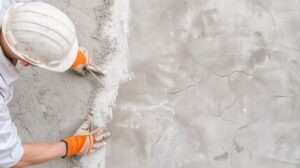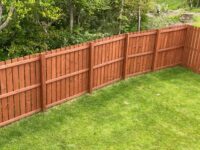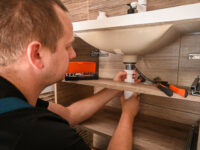Foundation Repair – Steel Piers and Their Fundamental Design
Foundation problems can be stressful, especially if not addressed quickly. However, by recognizing the true and false signals of a foundation problem early, homeowners can preserve their property and save on costly repairs down the road. Reach out to Foundation Repair Plano for expert assistance.
The first step of the process is to perform a thorough inspection and recommend a repair solution. This may involve excavating soil around your house and drilling into walls.
If your foundation is showing cracks or other signs of movement, a professional contractor should be contacted to inspect the problem. They will be able to identify the root cause of the problem, and provide expert repairs with a variety of solutions depending on the severity of the cracking or shifting. Having these issues repaired by professionals prevents the problems from getting worse and potentially causing further damage to your home or structure.
If the crack is not caused by soil pressure, it may be repaired using a crack injection system. These systems are designed to “weld” the crack back together, restoring the original strength and loading of the concrete. They also seal the crack to make the area impervious to water, air, chemicals, dirt, debris and other contaminants.
The first step in repairing a crack is to clean the surface of the wall, and sand it down to create a rough surface for the mortar. Then, a high-strength epoxy is mixed and troweled into the crack. It is important to ensure that the mortar is applied evenly, and that it fills the entire crack. Once the mortar is dry, a concrete crack repair caulk can be used to make the area weatherproof and attractive.
Leaking cracks must be addressed immediately to prevent moisture penetration, which can lead to mold and mildew growth in basements and crawl spaces, as well as rot of wood and other structural components. Cracks can be sealed with concrete crack caulk, polyurethane, or silicone. In some cases, a waterproofing membrane can be installed to create an impermeable barrier against moisture and humidity.
When choosing a provider for foundation crack repair, look for a company that has experience in addressing a wide range of problems with concrete and other materials. They should be licensed and insured to perform the work, and have an excellent reputation for quality and service. They should offer a variety of financing options, and guarantee their work with long, transferable warranties. Ideally, the warranty will cover both labor and materials for at least a decade, or even longer.
Underpinning
Underpinning is a more substantial repair method than crack repairs and involves extending the foundation in depth or breadth so it rests on a more supportive soil stratum or distributes its load across a greater area. This is typically accomplished by inserting piers under the existing foundation, and can include a variety of different methods such as micropiles and jet grouting.
Underpinning also includes lifting the foundation to restore its original position after foundation settlement has occurred. It’s also a great option for homes with damaged wood beam structures that need replacement. In most cases, this type of underpinning requires the excavation of soil directly beneath your home and is a major project for any homeowner.
If your foundation is in need of underpinning, it’s important to get it looked at as soon as possible. Foundation issues tend to get worse over time, and addressing them early will save you from more significant damage and costly repairs down the road. Some telltale signs that your foundation needs underpinning include visible leans to door and window frames, cracks that are getting wider and deeper around your windows and doors, and gaps that are opening up around your door and window frames.
A variety of things can cause your foundation to need underpinning, including changes in the soil it’s sitting on due to subsidence, erosion or problems related to plumbing that was never properly repaired. Foundations may also need underpinning if they weren’t built to today’s standards, or if the original foundation has become unstable due to factors like age, soil conditions or natural disasters.
While other repair methods such as mudjacking and using polyurethane materials can help, underpinning is the only permanent solution to this type of problem. While it’s more expensive than other options, it is a long-term fix that will return your home to its original position after subsidence has occurred and provides lift in the process. This is a more significant project than crack repair alone, so it’s a good idea to hire an experienced company to complete the work for you.
Concrete Piers
When a concrete slab foundation is damaged beyond repair or is experiencing significant movement, it may require concrete piers as part of the repair process. Foundation piers transfer the weight of the structure to more stable soil layers or bedrock, a much better option than slab-on-grade foundations that rely on gravity alone to support the weight of the building. Depending on the condition of your home’s foundation, there are several different types of concrete piers you can choose from.
One popular choice is helical piers, which are similar to push piers but have a more “screw”-like appearance and are driven into the ground using high-torque equipment. Another popular choice is the pressed piling method, which uses precast concrete cylinders that are pushed into place by hydraulic machinery. If you’re choosing this option for your home, ask about the shims that are added to each pier. This helps prevent the piers from shifting under the weight of your house, and it’s an important step in ensuring the structural integrity of the piers.
Once the concrete piers are installed, you can rest easy knowing that your foundation is strong and sturdy again. However, since these piers sit around a foot to a foot-and-a-half above the ground, they are still susceptible to moisture that can seep into the foundation and cause problems. To address this issue, you’ll want to talk with your foundation repair company about setting up a drainage system for your piers. This can include a French drain around the perimeter of your home, or it can involve a tile drain system inside your home with a pit and sump pump.
When it comes to foundation repairs, finding a trusted professional is essential for getting the job done right. It’s important to take the time to research the reputation of potential professionals, as well as their pricing and warranty options. You should also make sure that the professionals you consider have appropriate insurance coverage for their work, including workers’ compensation and liability. In addition, you’ll want to ensure that the professionals you hire are licensed and certified by your state’s regulatory agency.
Steel Piers
The cornerstone of modern foundation repair, steel piers are sturdy, structural elements that are driven deep into the earth to support and stabilize sinking or shifting foundations. Whether they’re used to support a quaint suburban home or a skyscraper, these robust, steel piers are the key to addressing any structural challenge that comes your way. In this article, we’ll take a closer look at their fundamental design and how they work to stabilize and restore the integrity of foundations.
Like concrete piers, steel piers are designed to anchor into load-bearing strata and provide superior stability. But they differ in that they can be driven much deeper into the ground, up to 75 feet or more. This extreme depth makes them an ideal solution for buildings with unstable soil conditions. They can also be installed more quickly and easily, since they don’t need to cure or set like concrete piers do.
Steel piers are also more resistant to damage, including corrosion, than other piering methods. This is because they’re made of high-quality, galvanized steel that resists the acidity in rain and minerals in soil. This resistance is especially useful in wetter environments where the steel piers will be exposed to higher levels of moisture.
Additionally, steel piers are less susceptible to soil movement than concrete piers. This is because they’re driven deep into the ground, up to 75 feet or so, and they’re anchored into bedrock rather than just softer soils. This allows them to more effectively counteract pressure and reduce differential settlement throughout the building.
The final benefit of steel piers is that they’re often less expensive than concrete piers and have a longer lifespan than other piering options. This is due to their superior quality and depth, as well as the fact that they don’t need to be capped or coated in concrete after installation.
Overall, steel piers are the preferred choice of most foundation specialists and are a key element in any comprehensive structural solution to foundation problems. When coupled with proper assessment, professional installation, and ongoing maintenance, these steel piers will help your foundation stand firm for years to come.






